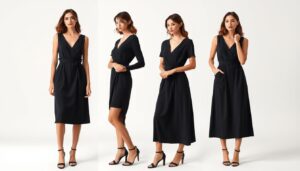Embracing Ethical and Sustainable Fashion: A Conscious Consumer’s Guide
The Rise of Ethical and Sustainable Fashion
In a world where fast fashion fuels overconsumption and environmental degradation, ethical and sustainable fashion is rising as a transformative movement — one that challenges the norms of the global fashion industry. This conscious approach to clothing goes far beyond trends or aesthetics. It champions a holistic shift toward values-based living, where what we wear reflects not just personal style, but also our stance on environmental health, human dignity, and social responsibility.
At its core, ethical and sustainable fashion prioritizes environmental stewardship, ensuring that fabrics and production methods minimize harm to the planet. It also upholds fair labor practices, advocating for safe working conditions, fair wages, and transparency in the supply chain — especially in a world where exploitation often hides behind the seams of mass-produced garments. Equally important is the emphasis on mindful consumption, encouraging individuals to buy less, choose better, and value longevity over quantity.
More than a fleeting trend, this is a global lifestyle shift with the power to reshape how clothes are made, marketed, and worn. As consumers, our choices influence demand — and when we choose sustainability, we help drive positive change at every level of the industry.
In this guide, you’ll gain a clear understanding of what ethical fashion truly involves, discover actionable ways to make more conscious wardrobe decisions, and learn why every purchase is a vote for the kind of world we want to live in.
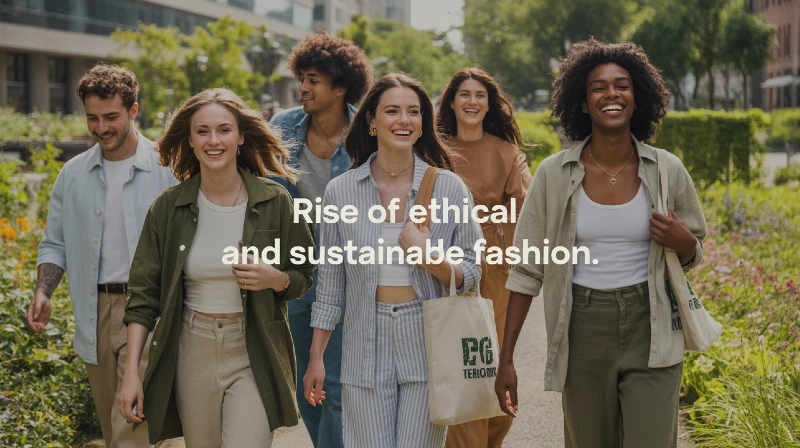
💡 What Is Ethical and Sustainable Fashion?
Ethical and sustainable fashion is a comprehensive, values-driven approach to how clothing is designed, manufactured, sold, worn, and eventually discarded. It prioritizes people and the planet at every stage of the fashion lifecycle — from sourcing raw materials to the final garment’s impact after it leaves your closet.
Rather than focusing solely on trends or surface-level style, this philosophy aims to minimize environmental harm, protect human rights, and promote mindful consumption. It acknowledges that fashion is not just about looking good — it’s about doing good too.
Here’s how it breaks down:
🌱 Environmental Impact
Sustainable fashion works to reduce pollution, waste, and overuse of natural resources. It promotes low-impact materials like organic cotton, hemp, bamboo, and recycled fibers, while discouraging harmful practices such as toxic dyeing, overproduction, and excessive water usage. Brands committed to sustainability often embrace eco-friendly production methods, carbon offsetting, and circular design principles to reduce their ecological footprint.
🧑🏭 Worker Welfare and Rights
Ethical fashion ensures that every person involved in making a garment is treated fairly and paid justly. This includes advocating for:
Safe, dignified working conditions
Living wages instead of minimum wages
Transparency in global supply chains
Zero tolerance for child or forced labor
Supporting ethical fashion means supporting the human stories behind every stitch.
🔁 Product Longevity and Reusability
Sustainability isn’t just about how clothes are made — it’s also about how long they last and where they end up. Ethical fashion promotes the idea of buying less, choosing better, and wearing longer. This includes choosing quality materials, timeless designs, and versatile pieces. It also embraces practices like repairing, repurposing, donating, or recycling garments to reduce landfill waste.
Whether you’re buying a simple white tee or an elegant designer piece, understanding the full life cycle of your clothes transforms the way you shop. Instead of being a passive consumer, you become an active participant in creating a more sustainable and just fashion future — one conscious choice at a time.
✅ A Practical Guide to Sustainable Fashion Choices
Building a sustainable wardrobe doesn’t mean sacrificing style — it means making informed, intentional decisions that align your fashion habits with your values. By choosing eco-friendly materials, supporting ethical brands, and resisting the pressure of fast fashion, you help reduce your environmental footprint and support a fairer industry. Here’s how to begin your journey toward mindful fashion:
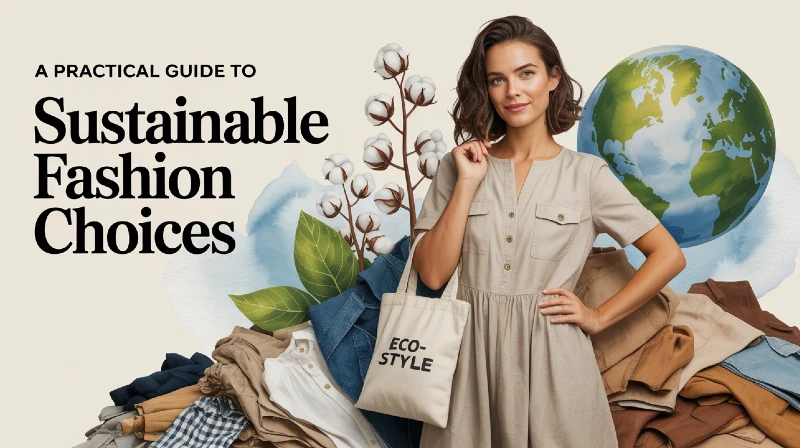
1. Choose Sustainable Materials
The foundation of any eco-conscious wardrobe lies in the fabrics you wear. Many conventional textiles, like polyester or conventional cotton, are resource-intensive and polluting. In contrast, sustainable materials are designed to minimize harm to the environment while still offering comfort and durability.
Look for:
Organic Cotton – Grown without toxic pesticides, using less water than traditional cotton.
Hemp – A fast-growing, low-impact fiber that’s naturally pest-resistant and biodegradable.
Bamboo – Especially when processed sustainably, it offers a soft, breathable, and renewable alternative.
Linen – Made from flax plants, requiring minimal water and chemicals.
Recycled Fabrics – Such as recycled polyester (rPET), which repurposes plastic waste into new garments, reducing landfill buildup and virgin plastic production.
Pro Tip: Always check garment labels and brand certifications like GOTS (Global Organic Textile Standard) or OEKO-TEX for fabric sustainability claims.
2. Support the Slow Fashion Movement
Slow fashion is the antidote to fast fashion’s overproduction and waste. It encourages consumers to shift from trend-based, high-turnover shopping to quality-driven, thoughtful purchases that last.
Here’s how to practice it:
Invest in timeless basics – Capsule wardrobe pieces like classic blazers, white shirts, and versatile dresses never go out of style.
Buy less, wear more – Focus on versatility and repeat wear, choosing garments you can style multiple ways.
Value craftsmanship – Choose brands that emphasize durability, tailoring, and ethical production over mass-market convenience.
Not only does slow fashion reduce waste, but it also redefines style as a reflection of values rather than fleeting trends.
3. Understand Supply Chains
Behind every garment is a complex network of farms, factories, and workers — and not all brands operate transparently. Ethical fashion prioritizes fair treatment of people throughout the supply chain, ensuring that the workers who sew your clothes are paid fairly and treated with respect.
When evaluating brands, ask:
Where are your clothes made?
Are factory conditions safe and humane?
Do workers receive a living wage?
Look for brands that share sourcing details, conduct third-party audits, and publish impact reports. Certifications like Fair Trade, SA8000, or WRAP (Worldwide Responsible Accredited Production) can help validate ethical claims.
Bonus Tip: Use platforms like Good On You to check brand ethics before making a purchase.
By starting with these three steps — choosing better materials, embracing slow fashion, and supporting ethical supply chains — you’re not just changing how you shop. You’re participating in a movement that values the planet, protects workers, and elevates fashion into something meaningful and sustainable.
👗 Eco-Friendly Clothing Brands Making a Difference
The fashion landscape is changing — and today, shopping sustainably no longer means sacrificing style or convenience. A growing number of fashion brands are taking bold steps toward reducing their environmental impact and improving transparency in their supply chains. These leaders in ethical fashion are proving that profit and purpose can go hand in hand.
Below are the key hallmarks of brands making a real difference — and what you should look for when choosing where to shop:

🌱 Top Sustainable Fashion Labels
Certain brands have become household names in the ethical fashion movement, not only for their design but also for their commitment to environmental and social integrity.
Patagonia: Known for its activism, fair labor practices, and durable outdoor apparel made from recycled and organic materials. They also offer Worn Wear — a program that repairs, resells, or recycles used gear.
Reformation: Stylish and trend-forward, Reformation publishes transparent sustainability reports and uses eco-friendly fabrics in chic silhouettes.
People Tree: A pioneer in fair trade fashion, People Tree ensures all garments are produced by artisans earning fair wages in safe environments.
Eileen Fisher: A leader in slow fashion, this brand invests in regenerative farming, circular design, and women-led supply chain initiatives.
These brands serve as benchmarks of integrity in the industry — balancing aesthetic appeal with ethical responsibility.
🔄 Innovative Sustainable Practices
Beyond simply using better materials, forward-thinking fashion companies are redesigning how clothes are made, shipped, and repurposed. Look for brands implementing:
Zero-Waste Design: Cutting patterns with minimal offcuts or repurposing fabric scraps into new garments to prevent landfill waste.
Closed-Loop Production: Designing garments that can be disassembled and recycled back into raw materials, extending product life and reducing demand for virgin resources.
Upcycled Collections: Creating unique pieces from deadstock or discarded textiles, breathing new life into what would otherwise be waste.
Carbon-Neutral Operations: Offsetting emissions from manufacturing and shipping through reforestation, renewable energy, or verified carbon credits.
These innovations are reshaping fashion’s impact — reducing waste, conserving energy, and lowering the carbon footprint across the lifecycle of a garment.
🤝 Consumer-Engaged Initiatives
Ethical fashion doesn’t stop at checkout — and the best brands know this. Many now empower customers to extend the life of their clothing and minimize waste even after purchase.
Take-Back Programs: Brands like Madewell and H&M Conscious allow you to return worn garments for recycling or resale.
Clothing Repair Services: Nudie Jeans, for example, offers free lifetime repairs to encourage long-term use.
Resale and Rental Platforms: Companies like The RealReal or Rent the Runway offer sustainable alternatives to buying new, promoting circular fashion habits.
By engaging customers in the sustainability process, these initiatives help build a fashion culture rooted in longevity, responsibility, and shared values.
Bottom Line: Shopping sustainably isn’t about perfection — it’s about progress. By supporting eco-conscious fashion brands and embracing transparency, you align your wardrobe with a vision for a more ethical and sustainable industry.
🌐 Why Ethical Fashion Matters
The fashion industry is one of the largest global industries — but it’s also one of the most impactful, for better or worse. Its reach spans continents, economies, ecosystems, and millions of workers. While fast fashion has made clothing more accessible, it’s also responsible for a growing trail of environmental destruction, labor exploitation, and unsustainable consumer habits.
By choosing ethical and sustainable fashion, consumers play a critical role in transforming the industry from the inside out. Here’s why your choices matter:
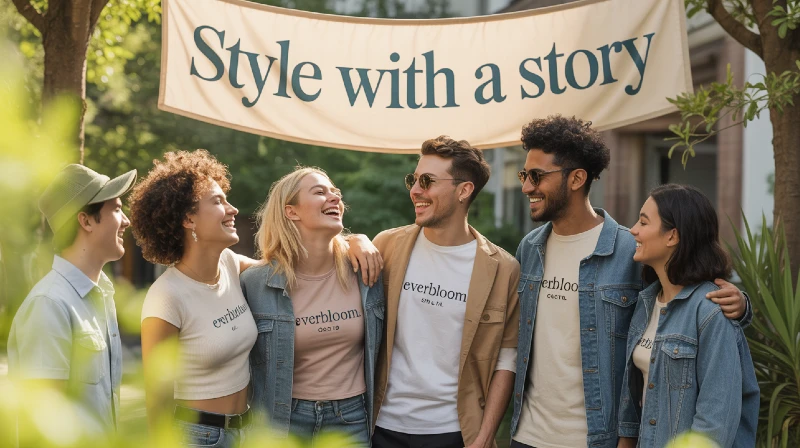
🌿 1. Environmental Protection
The fashion industry is the second-largest consumer of water and a major contributor to global pollution. From chemical-laden dyeing processes to mountains of textile waste, the environmental toll of fast fashion is staggering.
By supporting sustainable fashion, you help:
Reduce greenhouse gas emissions from overproduction and synthetic materials.
Conserve water by choosing fabrics like organic cotton and hemp, which require far less than conventional cotton.
Minimize microplastic pollution by avoiding petroleum-based fabrics like polyester and acrylic.
Keep clothing out of landfills by embracing durable, timeless garments designed to last.
Each eco-conscious purchase is a step toward preserving ecosystems, reducing waste, and protecting our planet for future generations.
✊ 2. Social Impact and Fair Labor
Behind the scenes of cheap clothing are millions of garment workers, many of whom face:
Unsafe working conditions
Poverty wages
Long hours with little legal protection
Ethical fashion brands flip the script, putting people before profits. They commit to:
Paying living wages, not just minimum wages
Ensuring safe, dignified working environments
Empowering women, who make up the majority of garment labor globally
Maintaining transparent supply chains to prevent abuse and forced labor
When you choose ethically made clothing, you’re not just buying a product — you’re supporting the dignity, safety, and livelihood of the people who made it.
🧠 3. Consumer Empowerment
Fashion is personal — and powerful. Every item you purchase is a vote for the kind of world you want to live in. When you understand the full story behind your clothes, from fiber to factory to final stitch, your buying power becomes a catalyst for systemic change.
Ethical fashion empowers consumers to:
Make intentional, informed purchases
Support brands that align with their values
Push the industry toward greater transparency and accountability
This isn’t about perfection — it’s about progress. Each ethical purchase sends a message to the market: We care, and we expect better.
🌱 The Ripple Effect of Conscious Fashion
Choosing ethical fashion may feel like a small act — but its ripple effect is vast. When more consumers demand sustainability and justice, brands adapt, laws evolve, and a more humane and eco-conscious fashion future becomes possible.
🔁 Building a Circular Fashion Future
Ethical fashion isn’t just about making better purchases — it’s about rethinking the entire fashion system from a linear “take-make-dispose” model to a circular, regenerative approach.
Circular fashion emphasizes extending the lifespan of clothing by designing, consuming, and disposing of garments in ways that eliminate waste and pollution. The goal is to keep textiles and materials in use for as long as possible — and to ensure that when clothes are no longer wearable, they are responsibly recycled or repurposed.
Here’s how you can participate in the circular fashion movement:
🧵 Repair your clothes instead of discarding them for small flaws.
♻️ Reuse and upcycle old garments creatively or turn them into new pieces.
🎁 Donate or swap items with friends, family, or through community clothing exchanges.
🏷️ Shop from brands that offer take-back programs or design for recyclability and durability.
Every small action — whether it’s patching a torn jacket or choosing timeless styles over trendy throwaways — contributes to reducing waste and creating a sustainable loop within fashion.
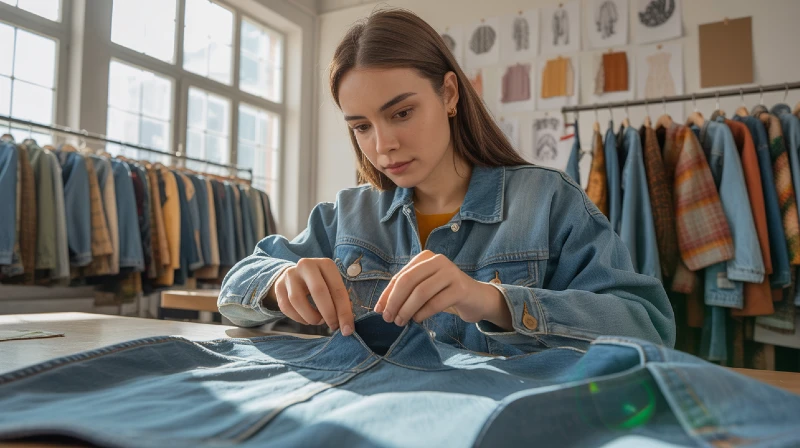
🎓 Education and Awareness: Your Role as a Conscious Consumer
Knowledge is power — and in the world of fashion, it’s a game-changer.
Becoming a conscious consumer starts with curiosity and a willingness to look beyond the label. Understanding where your clothes come from, who makes them, and how they impact the planet is the first step toward meaningful change.
How to shop more mindfully:
Read labels for fabric content and country of origin — organic or recycled materials are a great start.
Ask questions before purchasing: Was this made ethically? Is it designed to last?
Use research tools like the Good On You app or brand impact reports to check for sustainability practices.
Start conversations with friends and family about what you’ve learned. Awareness spreads through shared knowledge and daily choices.
Empowerment through education transforms you from a passive buyer into a purposeful advocate for ethical fashion.
🚀 The Future of Fashion Is Ethical
The ethical fashion movement is no longer a niche — it’s becoming a global standard.
From biodegradable fabrics and 3D-knit technologies to blockchain-based supply chain transparency, innovation is driving the shift toward a more responsible industry. Consumers, designers, and brands are all recognizing that fashion can no longer come at the cost of people or the planet.
What’s on the horizon:
🌱 Greater use of regenerative materials like mycelium leather or banana fiber.
🧵 Technology-enabled transparency to trace every stage of a garment’s journey.
♻️ Circular marketplaces that encourage resale, repair, and rental.
By supporting ethical brands, voicing your values, and choosing sustainability, you’re helping shape a fashion future rooted in justice, creativity, and sustainability.
🧵 Conclusion: Wear Your Values
Ethical fashion is more than a trend — it’s a declaration of values.
Each garment in your wardrobe holds the potential to reflect not only your personal style but also your commitment to environmental care and social equity. By choosing thoughtfully, buying responsibly, and embracing sustainability as a way of life, you’re contributing to a movement that prioritizes the well-being of people and the planet.
Together, we can move the fashion industry toward a future that is:
🌍 More sustainable
✊ More humane
👗 And infinitely more meaningful
Let your clothes tell a story you’re proud of. Wear your values.
📌 Frequently Asked Questions (FAQs)
🔹 What makes a fashion brand ethical or sustainable?
Ethical brands prioritize eco-friendly materials, transparent supply chains, and fair labor practices. They often hold certifications and publish impact reports.
🔹 How can I shop more sustainably on a budget?
Try secondhand stores, vintage markets, or clothing swaps. Invest in fewer, better-quality pieces, and explore affordable ethical brands.
🔹 What is the difference between ethical fashion and fast fashion?
Fast fashion emphasizes cheap, mass-produced trends with little regard for environmental or human impact. Ethical fashion values sustainability, fairness, and quality.
🔹 Why does sustainable fashion cost more?
Because it reflects the true cost of safe labor, eco-conscious materials, and responsible production — costs that fast fashion often hides through exploitation.
🔹 Can one person really make a difference?
Absolutely. Every purchase you make influences demand. Collectively, millions of small, conscious decisions can shift an entire industry.

Eduard Kingly is a travel and lifestyle content creator with a focus on personal development and education. He combines firsthand travel experiences with research-driven insights to guide readers in discovering new places, building better habits, and pursuing meaningful learning.


